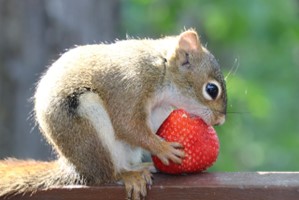David VanderSchee enjoys the relaxing hobby of photography in his spare time. In the following article, David VanderSchee provides readers tips and suggestions on how to capture common wildlife photos for nature enthusiasts and amateur photographers alike.
There are few things more worthwhile to appreciate than nature and the wildlife that makes it so beautiful. One of the best ways to accomplish this appreciation, in turn, is to funnel a passion for photography into capturing its best moments.
According to industry experts, there is
more than one way to capture impactful photos of wildlife, and these depend on skill as well as practice. Sometimes the correct equipment, such as a telephoto lens or a quick shutter speed, is all that is needed. On the other hand, a photographer must learn to be patient and create interest in their photos.
In this article, David VanderSchee reviews the top three ways to capture wildlife through the lens of a camera. By the conclusion, any amateur photographers or those passionate about photos in general should be able to achieve their artistic goals in photographing the world. With so much to go over, let’s get started.
Capturing Wildlife
David VanderSchee explains that there are many things to consider when snapping any great photo. Not only are design principles important to factor in, but so are equipment choices and personal preferences, as well as the audience a professional is hoping to demonstrate photographic brilliance to.
However, when adding animals and other aspects of nature to the mix as subjects, even more factors should be taken into consideration! Because of this, capturing wildlife through photography can sound like an incredibly daunting task.
David VanderSchee prepared a list of 3 ways to capture wildlife through the lens of photography to lift some of these burdens and give any photographer a place to start.
- Use the proper technology
- Correct the focus
- Be patient
David VanderSchee says that these three tips are crucial to snapping incredible photos. However, each one comes with its fair share of nuance. In order to properly grasp the advice found in these tips, VanderSchee dives into each in more detail below.
1. Use the Proper Technology
The proper photographic technology may not always be the most fun part of photography hobbies to talk about, but it is nevertheless a necessary one. This is especially true when it comes to getting just the right picture of a passing bird or even wildcat.
Lenses are often one of the most subtly important pieces of equipment to get right no matter what subject one is taking a picture of. When it comes to wildlife, lens selection depends on the focus of the shot reports David VanderSchee.
If an animal stands out in a particularly unique way from its environment, consider a wide angle to capture the full composition. However, a telephoto lens is better for zooming in for more targeted shots. When trying to capture the sight of easily-spooked animals, this is integral to the process.
David VanderSchee says to also consider using a lens that will allow quick shutter speeds such as one with an aperture down to f2.8. This is especially helpful when trying to capture the sight of a bird in flight or a horse in a trot, or any animal in motion. The images will also remain sharp.

 2. Use the Correct Focus
2. Use the Correct Focus
As important as the right lens and shutter capabilities can be, ultimately, photography is about making the most of focus. Framing a shot with trees or any other type of element in an animal’s surroundings can be a pleasing choice, but sometimes the more interesting option is to fill the shot with the face of an animal.
David VanderSchee explains that a primate or a feline are two types of animals that can stare quite impressively, and filling a composition with that striking image creates even more visual interest. In general, any detail that catches a photographer’s attention, such as the splay of a canine’s toes or the whiskers of a curious fox, can make a great photo with the right focus.
3. Be Patient
Finally, David VanderSchee says that one of the more practical tips for photography in general is simply to
exercise patience. With a battery fully charged and a memory card open and ready for great pictures, all that’s left to do is wait quietly.
Animals will rarely hold still for a great photo. They are also easily spooked, and may be aware a photographer is in the area long before that photographer has a chance to catch a glimpse of them, in turn.
This means a lot of waiting around. While a good photographer of wildlife shouldn’t be afraid to take advantage of a moment with a skittish creature, being prepared to wait for hours before an animal passes by is important to remember too, explains David VanderSchee.
In Conclusion
Capturing the beauty of nature through the camera lens does involve using good equipment such as a telephoto lens. However, it is also about the skill of the photographer in being willing to wait for several hours without getting impatient.
Just as important is the careful focus on details rather than a full-body shot of an animal. With these tips, capturing wildlife through the lens can be fun as well as inspiring!

 2. Use the Correct Focus
2. Use the Correct Focus